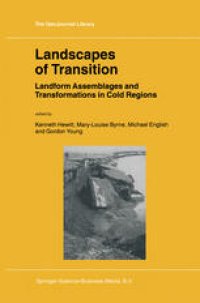
Ebook: Landscapes of Transition: Landform Assemblages and Transformations in Cold Regions
- Tags: Hydrogeology, Geography (general)
- Series: The GeoJournal Library 68
- Year: 2002
- Publisher: Springer Netherlands
- Edition: 1
- Language: English
- pdf
This volume had its origins in an international symposium organised by the Cold Regions Research Centre, and held at Wilfrid Laurier University in November, 1999. The chapters are modified from a selection of the papers at the meeting, and reflect reviews and revisions in light of discussions then. The original idea for the meeting was to address certain questions that the organisers were encountering in their own work, and that we felt had received limited attention in the recent literature. The two broad issues we wanted to address were: the complex associations of actual landforms and processes in cold regions, and how the almost universal legacies of past, different cold environments of the late Quaternary affect these landscapes in the present. The former involves the problem of identifying landform and sediment complexes, and the interrelations of relevant processes. We sought to identify this in terms oflandform and sediment assemblages appropriate to regional and field-oriented concerns.
This volume is mainly concerned with landform and sediment associations in cold regions, and their transformations over time and space in response to changing environments. Most of the chapters adopt a landscape approach, with the goal of describing, interpreting and comparing regional landscapes. The emphasis here is on landscapes that are formed or constrained by cold conditions. In particular, we look at landform morphology, earth surface processes and sediments reflecting the presence of frost, ice and melt water, and the influence upon landscape of cold-adapted plants and animals. The notion of 'transition' is employed to address the ways in which environmental changes are uniquely expressed through adjustments in landforms and earth surface processes. It is shown that geomorphic transitions have, or tend to, generate their own temporal and spatial shape. They involve mechanisms or patterns of adjustment distinct from, and not readily obvious in, the mere chronology of, say, climate change or tectonics. Examples are discussed from high mountain and glacierized environments, from cold lowlands and coasts. Appropriate theoretical concerns are addressed in relation to the slope stability and extreme mass movement events, paraglacial regimes, changing distributions of permafrost, delta and other cold coastal development.